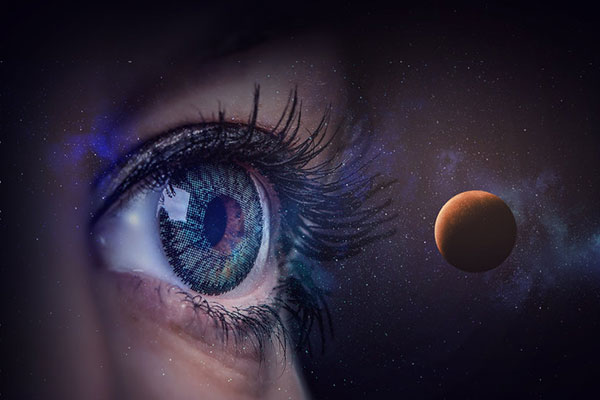beliefs
Will A Time Machine Change Our Perspectives Forever?
 A well-known television news show recently featured an astrophysicist talking about a project she was working on to turn back time and venture into the past. I was fascinated, but somewhat skeptical as to the potential success of such a mission.
A well-known television news show recently featured an astrophysicist talking about a project she was working on to turn back time and venture into the past. I was fascinated, but somewhat skeptical as to the potential success of such a mission.
She went on to explain that although we are currently experiencing the present moment, we are continuing to also look back into the past, while being in the present.
How does this work in our everyday reality? Imagine looking up at the sun. It takes as much as eight minutes for the sunlight to reach us, which means we are actually looking into the past.
The same applies when we are gazing up at the stars at night. Depending on a star’s location it can take starlight anything from four years to as much as fifteen billion years to reach Earth! So, once again we are in fact looking into the past.
I must admit it took me some time to wrap my head around this. However, once the concept made sense, I was able to grasp onto the meaning of all this.
She has been working diligently as part of a team for a number of years on a ‘time travel machine,’ for lack of a better term, that might have the capability of traveling so far back into the past, their hope is it could reach the exact time when the planet came into being! The time machine is set to stay in space for at least five years and hopefully reach a ten year time span.
Not only would its success afford humanity the privilege to see as far back as the beginning of time, but the machine also has the capability to go to other planets and determine whether there is for example, water, air, and any life forms existing on those planets.
Dealing With ‘Unawakened’ Friends And Family
 Spiritual awakening is a profound shift in our perception that forever alters the way we experience life. But after we have made the shift it can be difficult to relate to less spiritually aware friends and relatives and leave one feeling lonely and deeply isolated.
Spiritual awakening is a profound shift in our perception that forever alters the way we experience life. But after we have made the shift it can be difficult to relate to less spiritually aware friends and relatives and leave one feeling lonely and deeply isolated.
The following strategies can be helpful in cultivating more harmony between yourself and ‘unconscious’ people without compromising your own energy vibration.
COMPASSION AND EMPATHY
At one time you were also not awakened. Think back to what that was like. What kind of thoughts dominated your mind? How did you feel about your life? How did you feel in general? The truth is, although you’ve gone through a spiritual awakening, you can still relate to those who have not. You have a point of reference for this.
Someone who is unconscious typically doesn’t have a pleasant inner world, because they aren’t intentionally governing it. Think back to what your life and most importantly – your relationship with yourself and your mind – looked like before your awakening. What did your own resistance look like? At some point your perspective shifted. But prior to that point – how receptive were you to changing your views and ideas? Especially when a family member came to you and said, “Hey, you’re doing it wrong.”
Put yourself in their shoes. Now that you’ve awakened you have the pleasure to start putting it to use in a way that serves the highest and best good of all. Remember that every soul is a spiritual being, and just because you have awakened to this fact, does not make you ‘better than’ anyone else. This is a trap that the ego likes to throw up early, and often along the spiritual path.
The ego is something we must constantly be mindful of. You are not more spiritual because you are vegan, or because you meditate, or because you do Yoga. If you are living in judgment of others through these practices, you are trapped in ego. Be mindful of yourself and come back to a state of compassion and empathy. Allow people to awaken in their own time.
Stop Blocking Yourself!
 Have you ever felt like your life is just going nowhere, or you can’t connect emotionally to another person? At these times there is always one thing after another, and events in your life simply don’t seem to ‘gel’, or go right. Maybe you can’t get the job you want, or you are lonely.
Have you ever felt like your life is just going nowhere, or you can’t connect emotionally to another person? At these times there is always one thing after another, and events in your life simply don’t seem to ‘gel’, or go right. Maybe you can’t get the job you want, or you are lonely.
There are so many barriers we have to deal with, but there is a way to overcome all of this. The best way to do it is by truly knowing yourself – through self-discovery – and by letting go of people and material things that hold you back.
So many times we invest so much wasted energy in people-pleasing. Instead of constantly trying to please others, we could use this time to live a happier life, with greater more spiritual awareness, which will in turn make us much more useful in our service to others. Instead we spend so much time thinking about things we may have done wrong, the wrong others have done to us and regretting what we could have done differently
When we try and reason about our mistakes it just leads to anguish, because we have a lack of faith – faith in God and in ourselves. But, if we go before the thrown of God and get on bended knees, we will find that inner peace, grace and forgiveness that so many people venture off to far of places, looking to find. That inner peace and joy is always there and available, we just have to look up!
Also, we are concerning ourselves too much with the things of the world, putting too much value on financial success and material possessions. These can become obstacles that keep us from connecting with those we love, or want to love. It is pure self-sabotage.
Things That Go Bump in the Night
 I have never been one to base my beliefs on popular opinion, rumors, or superstition. My beliefs regarding the supernatural or paranormal come solely from my personal experiences, as well the trustworthy accounts of my immediate family. So, if I tell you there are indeed ‘things that go bump in the night,’ you can be sure that I am speaking of personal experience.
I have never been one to base my beliefs on popular opinion, rumors, or superstition. My beliefs regarding the supernatural or paranormal come solely from my personal experiences, as well the trustworthy accounts of my immediate family. So, if I tell you there are indeed ‘things that go bump in the night,’ you can be sure that I am speaking of personal experience.
When I was a little girl, for example, my father was the first person to bring the supernatural to my attention with a story of his own paranormal experience back in 1946. His story was the first to whet my appetite for investigating the paranormal and the mystical.
The Second World War had just ended, and my dad was only 20 years old at the time. The United Kingdom was still recovering from the horrendous aftermath. As a result, people were seldom out and about after dark. In fact, from what my father told me, there was not much socializing in those days and at night the streets were mostly deserted.
One night, after my dad had walked my mom (his future wife) back to her house, he decided to take a shortcut to his grandmother’s place, where he was living at the time. It was around 11pm and the short route took him past the graveyard on a street called Columbus Ravine. It was here that he saw the strange sight of a lady walking up the road in what appeared to be a Victorian costume.
“That is odd,” he thought. “A woman out alone at this time of night and dressed like that? Maybe she attended a fancy-dress party?”
He did not want to alarm her. After all, she was all by herself, it was dark out, and there was no one else around. To put her mind at ease, he therefore thought it polite to greet her.


